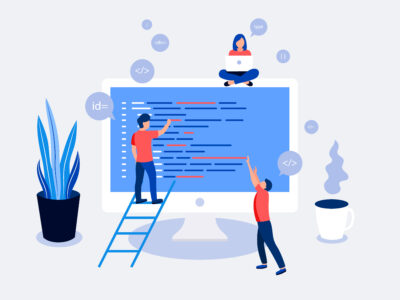In today’s corporate world, intruders often find an entry point which allows them to access PRIVATE information. An Oracle Linux environment alleviates that hassle because it is designed to create a security environment by default. When you create an Oracle Linux environment, you do not have to update it yearly as it is designed to last a lifetime. Just because you created the environment, now you need to learn how to secure it.
How Do I Secure My Oracle Linux Environment?
In order to secure an Oracle Linux environment, you need to follow these five basic steps. We will be covering the steps in this article, teaching you exactly what you need to know to prevent intruders from gaining classified information. The first step is to maintain the systems physical security. The second step is to monitor your systems audit trails, logs, and performance on a regular basis After all, if you do not monitor your system regularly how the world would you know if an intruder is trying to steal your information. The third step basically goes hand-in-hand with the second step, and that is using security and management tools that will scan your system for signs of intruders. In the fourth step, you have to ensure that you apply all security and software updates in a timely manner. The fifth and final step may not seem important, but it is, and during this step, you need to review all policies and procedures frequently.
So what does this basically boiled down to?
Physical Security – when it comes to physical security, there is a little more to it than what meets the eye. One thing to keep in mind while you are securing the physical security is the fact that limiting access to trained and authorized personnel is extremely important. Besides that fact, physical security also prevents unauthorized users from making changes to the BIOS system, accessing the system by booting from an alternate source, and of course prevents them from altering the boot device.
Monitoring Your System – monitoring your system is extremely important because if you have all the data in the world, it will do you NO good unless you access it. While monitoring the system log, do not forget to check the integrity of the log files, the log data that has been collected, and review any security events that have been logged in the system.
Scanning the Oracle Linux Environment and Management Tools – running your system management tools daily will aid in your systems performance as well as help troubleshoot if any problems arise. On top of running your systems management tools, you also need to constantly check the integrity of your software and system. Running these two tools will help you find out whether your system has been compromised.
Security Software and Updates – it takes some work as you can see to create an Oracle Linux environment. Because you went through all of this work to get your system secure, why let it go if you don’t update your security software regularly? This step may not seem very important; the truth of the matter is that it is extremely important. It prevents your software from becoming outdated hence possibly allowing intruders to gain access to your system.
Review – the fifth and final phase of creating a secure Oracle Linux environment is to review all of your policies and procedures on a regular basis After all, this will prevent you from forgetting a step or missing an important update.
As you can see in this article businesses need to have a secured Oracle Linux environment in order to prevent possible attacks on their system and from intruders stealing confidential information. It isn’t difficult to create a secure Oracle Linux environment.
Author Bio: Michael Clark has submitted this article. He is working with a company developing the software for linux platform and they are working on linux user activity monitoring software.










Comments